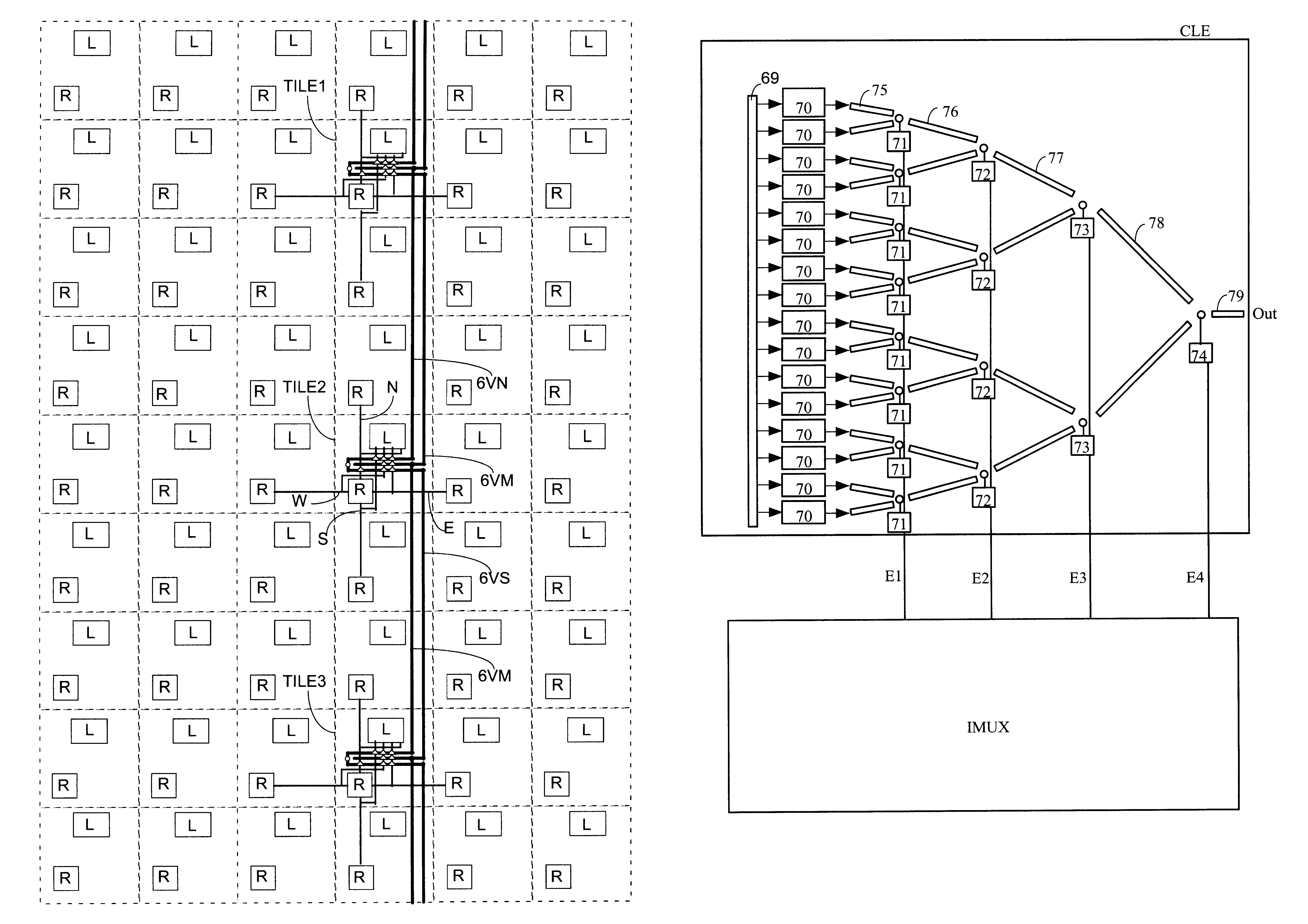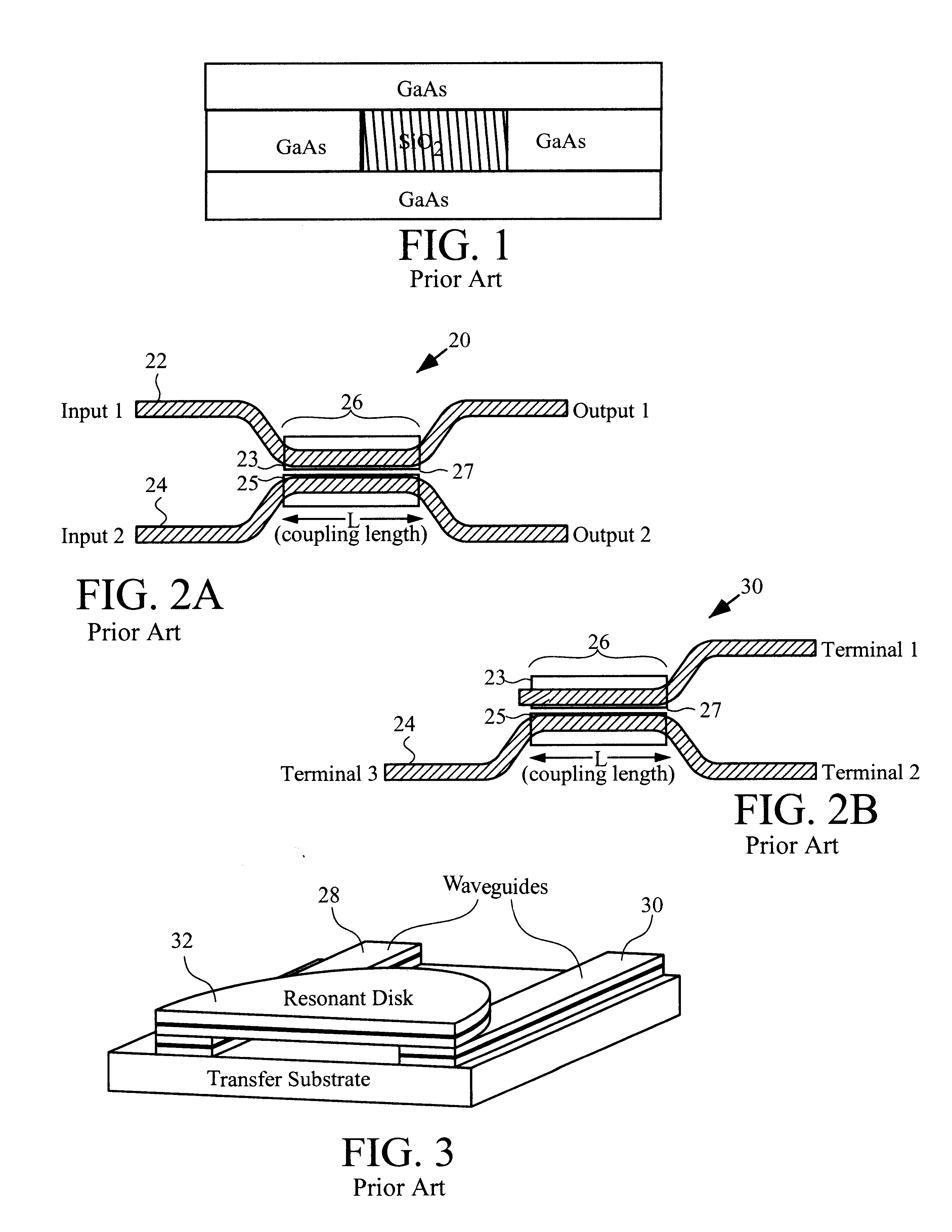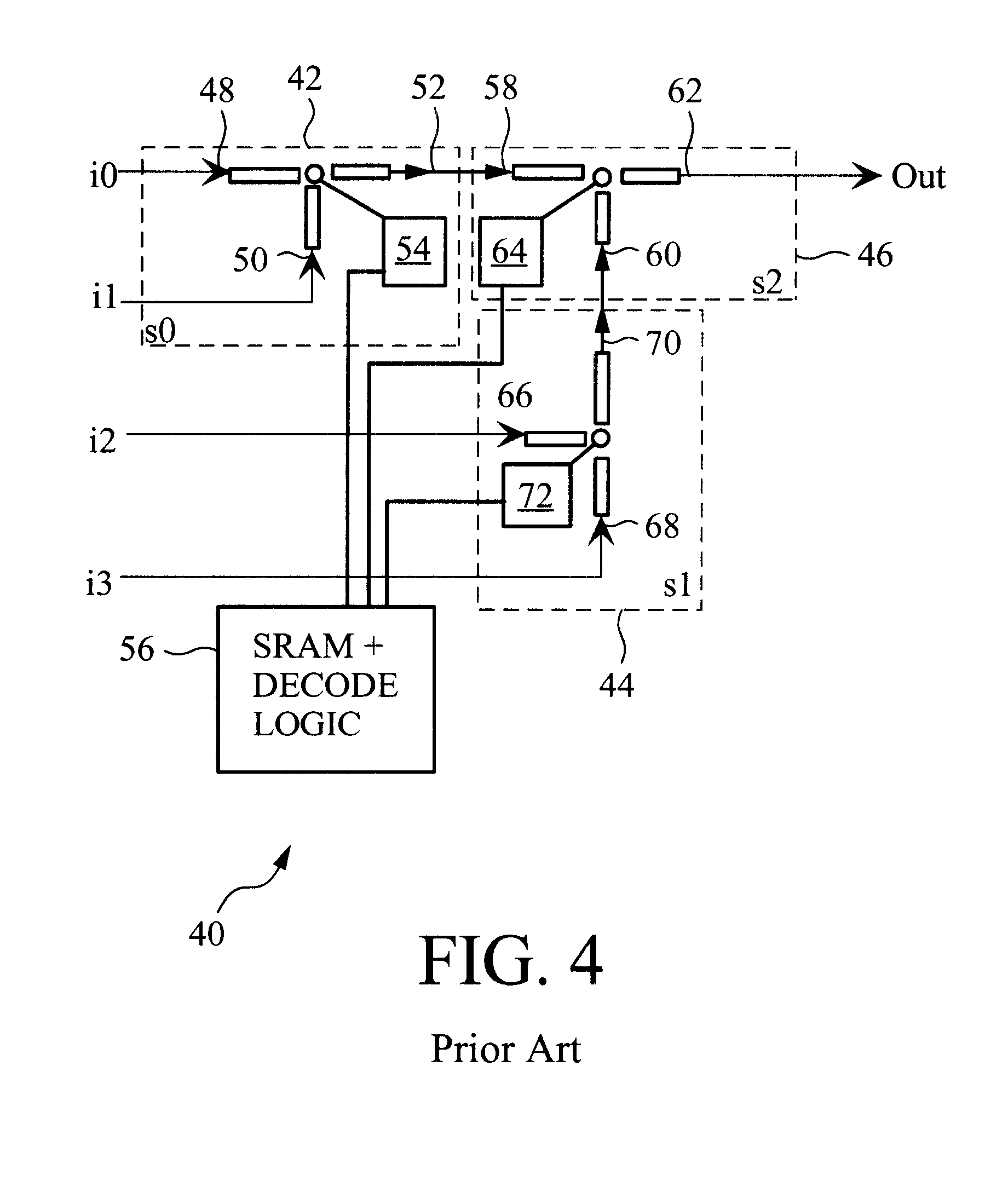Field programmable optical arrays
a field-programmable, optical array technology, applied in multiplex communication, pulse technique, instruments, etc., can solve the problems of low power, etc., and achieve the effect of low power, high speed and low power
- Summary
- Abstract
- Description
- Claims
- Application Information
AI Technical Summary
Benefits of technology
Problems solved by technology
Method used
Image
Examples
Embodiment Construction
FIG. 5 shows a block diagram of an FPGA structure with which the present invention may be used. Each tile includes a logic structure L and a routing structure R. Also included, though shown for only a few tiles, is an interconnect structure by which one tile can be connected to another tile. The interconnect structures are the same for all tiles, as further discussed by Young et al. in U.S. Pat. No. 5,914,616, incorporated herein by reference. According to the current invention, the routing structures and the interconnect lines are optical and are programmably connected together by optical switches that are electrically controlled. The logic structures L include both electrical and optical connections, and are discussed in more detail in connection with FIGS. 6 and 7.
FIG. 6 shows in more detail one of the tiles of FIG. 5. The lines shown in FIG. 6, for example lines E, HE, LHE, VS, S, and LVS are all optical, and all switching that occurs in the structure labeled ROUTING (labeled R ...
PUM
 Login to View More
Login to View More Abstract
Description
Claims
Application Information
 Login to View More
Login to View More - R&D
- Intellectual Property
- Life Sciences
- Materials
- Tech Scout
- Unparalleled Data Quality
- Higher Quality Content
- 60% Fewer Hallucinations
Browse by: Latest US Patents, China's latest patents, Technical Efficacy Thesaurus, Application Domain, Technology Topic, Popular Technical Reports.
© 2025 PatSnap. All rights reserved.Legal|Privacy policy|Modern Slavery Act Transparency Statement|Sitemap|About US| Contact US: help@patsnap.com



